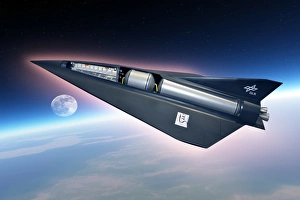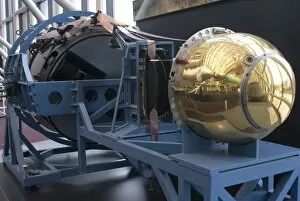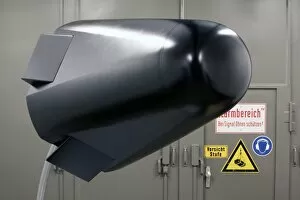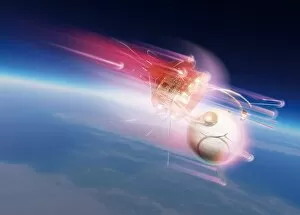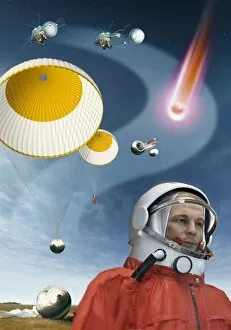Reentry Collection
"Reentry: Exploring the Boundaries of Flight" As shown in this photo of the HL-10 flight simulator
All Professionally Made to Order for Quick Shipping
"Reentry: Exploring the Boundaries of Flight" As shown in this photo of the HL-10 flight simulator, the lifting-body pilots embarked on a journey to push the limits technology. The four principal HL-10 pilots are seen here with the lifting body aircraft, ready to soar into uncharted territories. The HL-10 Lifting Body is seen here in powered flight shortly after launch from the B-52 mothership, defying gravity and paving the way for future space exploration. Like other lifting bodies, it gracefully glides over Rogers Dry lakebed, showcasing its remarkable aerodynamic capabilities. John Manke is shown here on the lakebed next to the HL-10, one of four different lifting-body vehicles he flew. These daring pilots fearlessly ventured into unknown realms to gather crucial data for NASA's research endeavors. NASA research pilot Bill Dana stands proudly in front of the HL-10 Lifting Body following his first glide flight on April 25. This moment marked a significant milestone in understanding reentry dynamics and shaping future spacecraft designs. This captivating photo shows the HL-10 in flight as it elegantly turns to line up with lakebed runway 18. Its sleek silhouette against an azure sky symbolizes humanity's relentless pursuit of conquering new horizons. The HL-10 lifting body is seen majestically soaring over Rogers Dry Lake at Edwards AFB—a testament to human ingenuity and determination. Each flight brought us closer to unraveling mysteries surrounding atmospheric reentry. The HL-10, parked on NASA's Flight Research Center ramp in 1966, stood as a beacon of innovation and progress. It served as an inspiration for generations that followed—proof that dreams can take shape through unwavering dedication and scientific exploration. Resting peacefully on Rogers Dry Lake—the unique location where it landed after extensive research—the iconic presence of the parked HL-10 reminds us all that breakthroughs are born from relentless experimentation and the pursuit of knowledge.





